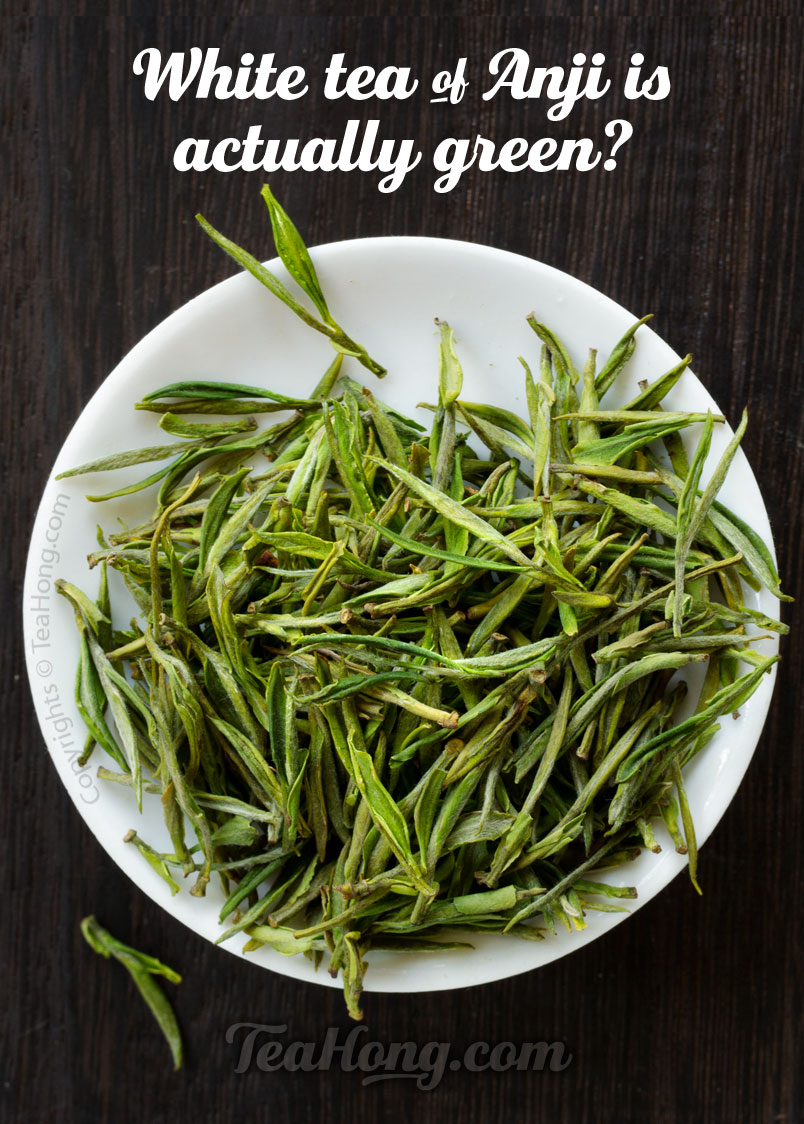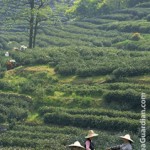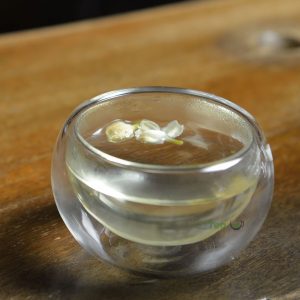Tagged: fermented-tea, kombucha
- This topic has 13 replies, 5 voices, and was last updated 10 years, 10 months ago by
asterix2k10.
-
AuthorPosts
-
-
2012.01.21 at 3:05 am #8419
Betty
ParticipantHi! I came upon this bottled drink called Kombucha. The labels says it’s a fermented tea. Quite expensive for a tea drink. Can anyone tell me more about it?
-
2012.01.23 at 4:15 am #9169
Leo
ParticipantThere is much controversy over the product and there are cases of intoxication. The name itself is a big gimmick and a mistake. I advise not drinking it at all. I personally think it is a scam by a packing company wanting to make a fat profit from the tea trend. The thing tastes terrible anyway. You can check Wikipedia about it but also google “Kombucha scam” or “intoxication”. The giant company has tried to wash down entries with a lot of positive entries, have patience to go down the google list.
-
2012.01.23 at 6:58 am #9171
tea soul
ParticipantKombucha is dangerous and bad taste. I do not know why people drink this at all.
-
2012.01.24 at 2:06 am #9174
Betty
ParticipantThank you for the tips. I don’t think I’ll bother to check. Won’t waste my time and money on it.
-
2012.04.11 at 2:08 am #9404
mbanu
ParticipantKombucha is sweetened prepared tea that has been fermented by a kombucha culture. In this way it is similar to Pu-erh (though not in flavor), in that it takes tea that is already processed and then acts on it with another organism. It was originally developed in the area on the Russian/Northeast China border formerly known as Manchuria, and most of its traditional drinkers are from Russia or the former Soviet Republics.
In the past few decades, however, there has been renewed interest in kombucha outside of its traditional circles. This has lead to a “homebrew” culture of kombucha in many places that is based off of green and oolong tea rather than the traditional black tea. Results are often mixed, because many of these homebrewers learned through trial and error rather than experienced instruction. This is also the source of many of the cases of kombucha poisoning that have been noted in the media. This new style of kombucha is often more tart than traditional kombucha, and is sometimes sold as a health tonic mixed with various spices. However, the best examples of the new style are (in my opinion) pure tea varieties.
One issue is that kombucha is much like beer, in that it tastes best fresh, and stored under certain conditions. So many bottled kombuchas don’t reach you until they are not at their best. There are a few producers making canned kombucha, and this seems to last much better, but I believe that they may be pasteurized, which would kill the active cultures. “Kombucha Wonder Drink” (run by one of the former co-founders of Stash Tea and Tazo Tea) out of Portland, Oregon in the United States makes a canned new-style kombucha that I think is good if fresh stuff is not available. If you are ever in Olympia, Washington, in the United States, there is another brand called “Magic Kombucha”, that is really impressive, but they have limited distribution, and only serve kombucha bottled, which means it has a limited shelf life.
-
2012.04.18 at 2:03 am #9415
tea soul
ParticipantThis theory about kombucha and puer the same is like saying shitake mushrooms that grow out of wood bits the same as a pot of sugared water cooked with saw dust left aside to “ferment”.
I wish there were any solid reliable reference to the claim that this kombucha thing comes from Russia or any of its formr allies, but all are just claims basing on other claims. The claimed health effects of the drink in the few scientific reports can be said of so many other normal grocery products. None effectiveness findings exist.The drink is full of sugar, to say the least. Refined white sugar, to be exact. The kind that is most dangerous of all cane sugar derived products. I am not sure if the moldy culture is more about the sugar or about the tea. Read the label of ANY kombucha bottle and try to understand the data. Do not fall into another scam by bottle drink manufacturers. They are all selling basically sweetened water with a bit of this and that in it. Google the sales of bottled kombucha, the figure is not about the miserable volume home-made version your friend may be doing. Its all a big brother game. -
2012.04.18 at 5:01 am #9416
mbanu
ParticipantI don’t believe that most large established tea companies are actually producing bottled kombucha, because of uncertainty over the health risks and the fear of litigation. The largest company I can think of that has a kombucha line currently is Celestial Seasonings in America, and they are not the market leader… Honest Tea (owned by Coca-Cola) released a kombucha for a brief period of time, but withdrew it from the market after being sued by someone for having a 2% alcohol content when the label stated that it was non-alcoholic.
The sugars in kombucha are used as food for the kombucha culture. It becomes less sweet and more tart over time.
I will see if I can locate a few papers I know of that trace kombucha’s history.
-
2012.04.19 at 4:42 am #9419
mbanu
ParticipantOne challenge is that much early research was not done in English.
The earliest scientific reference to the kombucha culture was in 1913 by Gisevii Lindau. [Lindau, G., Ueber Medusomyces Gisevii, eine neue Gattung und Art der Hefepilze. Berichte deutsch. Bot. Ges. 31, 243-248 (1913).] Here is a reference made to it in English from a 1920 encyclopedia on yeasts. At first, he thought it was a single fungus, but his colleague Dr. Lindner realized that it was a mixture of many cultures, and published a correction. [Lindner, P., Die vermeintliche neue Hefe Medusomyces Gisevii. Ber. deutsch. Bot. Gesell. 31, 364-368 (1913).]
Courland, where Dr, Lindau first noticed kombucha tea, was a part of Russia in 1913. Now it is in Latvia. How kombucha came to be known by that name (which is properly the name of an unrelated Japanese kelp drink) I do not know, although it was referred to by that name in the scientific literature as early as the late 1920s. [Hermann, S., Uber die sogenannte ‘Kombucha’. Biochem. Z. 192, 176-199 (1928).]
-
2012.04.19 at 4:46 am #9420
mbanu
ParticipantI will see if I can find some more references.
-
2012.04.19 at 5:43 am #9421
mbanu
ParticipantIn 1932, the Tea and Coffee Trade Journal had an article on it.
Here is the section on history:
“A certain amount of mystery surrounds the history of the mold. According to Dinslage and Ludoff, German investigators, it was introduced into Germany in 1911, presumably from Mitau [now known as Jelgava], Courland, Russia, and was cultivated by people who used the fermented liquid obtained as a household remedy for all kinds of ills. In Russia, it was known before 1911, but even in Mitau, where it is said that sailors first taught the inhabitants the use of the mold, its importation is comparatively recent. Where the sailors originally obtained the mold has yet to be discovered. Judging from the names by which it is popularly known — for instance, Japanese, Manchurian, and Indian tea fungus — it probably derives from the Orient. Scientists found that the mold grows best between 25-30°, and consequently inquiries in the tropics were instituted, but so far no positive information has been obtained from these places, which include Java, New Guinea, Samoa, Africa, and Argentina. It is hoped that better success will attend inquiries sent to China and Japan.”
I believe it was also mentioned in William Ukers’ 1935 “All About Tea” enyclopedia by the name of “Tea Cider”… I will see if I can find the reference.
-
2012.04.19 at 7:29 am #9422
mbanu
ParticipantUnder “Tea Novelties” from Volume 2 of the encyclopedia:
“TEA CIDER
Tea cider was known in Germany as early as 1911, and is said to have been introduced from the Orient. In 1933, experiments with its manufacture were begun in Java and Ceylon.
The process of manufacture is comparatively simple. An ordinary infusion of tea, using 1 1/2 to 2 ounces of tea to a gallon of boiling water, is strained from the leaves and to the liquor 10 per cent of sugar is added; i.e., 1 pound of sugar to 1 gallon of liquor. This is cooled and placed in an open, dust-proof jar. The ferment, or yeast, is added and converts the sugar into alcohol and carbon dioxide gas, which latter escapes. The alcohol is then converted into acetic acid by he bacterium. These reactions give the cider its character. The yeast used appears to be a mixture of fungi, only two of which are of importance, according to Dr. C.H. Gadd of the Tea Research Institute of Ceylon. One of these is a yeast, Saccharomycodes ludwigi, and the other a baccillus, Bacterium xylinum. The particular yeast does not apparently matter, although the specific bacterium named is important, since it gives the characteristic odor and flavor to tea cider.
The sugared infusion is sweet at first, but the sweetness gradually disappears as the yeast begins to work, and acidity develops. The degree of sweetness or acidity is a matter of taste which decides when fermentation shall be stopped. The time required for fermentation depends on the temperature and may be as long as two or three days.
When the infusion has attained the right flavor and taste it is filtered through a thick, double cloth and bottled in vessels completely filled and tightly corked. The absence of air stays the action o the bacterium, but the yeast continues to work and produce gass, which gives an effervescence to the liquor. The cider should be kept in a cool place, well stoppered. It seldom contains more than one per cent alcohol. A tea vinegar also can be prepared by allowing the ferment to proceed for about a month. Then the vinegar is strained, boiled, and bottled.”
Although it appears that the kombucha bottling factories in Java did not survive World War II, the kombucha culture used was salvaged and was still in use in 1990 when a Japanese researcher found the Indonesian locals still brewing it. He wrote a paper on the Indonesian kombucha that is available online here. I do not know what happened to tea cider in Sri Lanka, although it was still known in the late 1960s… is it still made there?
-
2012.04.19 at 7:52 am #9423
Leo
Participantmbanu,
Thank you for sharing the references. William Ukers has been a hero but we all know the accuracy of our knowledge improves with time as more and more scholars share efforts in improving the understanding of things.Quite many years ago I took notice of this “mushroom” tea trend in the West. The kombucha that is popular in the West today has not been well documented here in the East. As a matter of fact, I cannot personally find any historical writing about it in the Chinese language. Yet it is presumed that this comes from the East. Your reference is really contemporary.That’s okay. It really is not my concern that there are new flavours of bottled drinks somewhere in the market. There are new ones almost every other week anyway. It is my concern though, that it has the association of tea and is potentially toxic and is not health contributing as it claims so loudly to be. There are quite a number of official announcements disqualifying the claims, but I think you may like to read this more accessible one on the net by NYU:The thousand years of human heritage has left for us a lot of treasures and it is up to us to select those that is worth our continual efforts in developing. Tea is one. As for kombucha, I have much doubt in it. -
2012.04.19 at 8:46 am #9424
mbanu
ParticipantThank you for the article. I agree that the health claims for kombucha are sometimes exaggerated. I feel that this is also true of the health dangers. Many of the more serious claims, like the lead poisoning from brewing kombucha in a ceramic pot, and the anthrax mentioned in the link, are from people who brewed the kombucha themselves without understanding how to do it. The link also notes that when taken in appropriate doses and made correctly, kombucha is essentially non-toxic. I will be the first to admit that more research needs to be done to have a clear understanding. From a scientific perspective we know hardly anything about kombucha at all… there is still debate over what organisms should and should not be part of a kombucha culture! Most of the information around for making good kombucha is just folk wisdom… but done well it still has a unique and pleasant taste. 🙂
1911 was indeed not so very long ago… I believe that those stories that trace kombucha back into antiquity are mistaken. It is most likely an invention of the Russians, perhaps from western Russia, although I would not be surprised if it had come from Manchuria… for many years parts of Manchuria were under Russian control, and Vladivostok was a major hub in the Russian tea trade. Without proof, though, this is indeed still hearsay.
-
2013.06.28 at 5:02 pm #9899
asterix2k10
ParticipantI go on and off brewing my own kombucha at home. I don’t do it currently because it’s a pain to keep the culture alive by constantly brewing it. I end up with much more than I can drink. I like to use green or white tea and brew the same way I make most green and white teas – with maybe 50 C water, brewed for four minutes (1 tsp tea per cup of water.) Then I add brown sugar, let cool, and place the fungus in with the tea into a glass container. I cover it with paper towel and rubber bands, and let ferment for about 2 weeks. As it brews it gets less sweet, more vinegary. The result is a lightly effervescent, slightly alcoholic drink that is living (probiotic,) and tastes like a slightly sweet, slightly sour brew that has a tang to it. It is mainly a digestive tonic for me.
-
-
AuthorPosts
- You must be logged in to reply to this topic.










